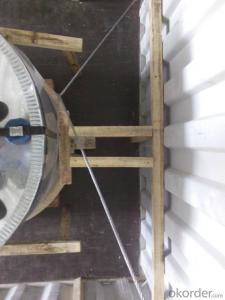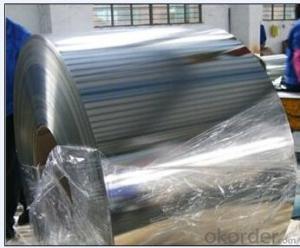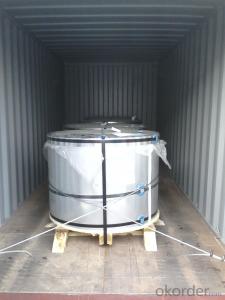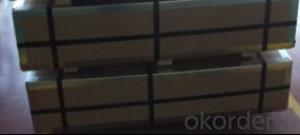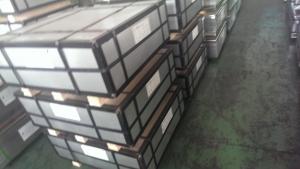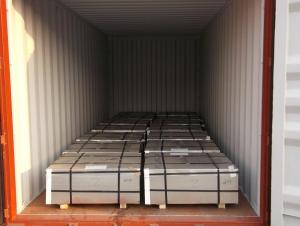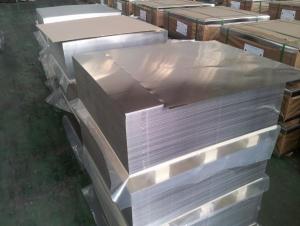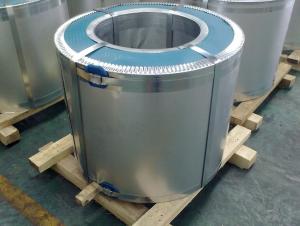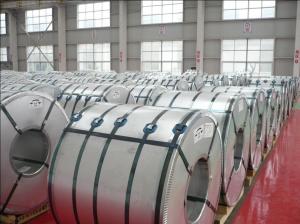ETP from MR steel & SPCC
- Loading Port:
- China Main Port
- Payment Terms:
- TT OR LC
- Min Order Qty:
- -
- Supply Capability:
- -
OKorder Service Pledge
OKorder Financial Service
You Might Also Like
We are one of the main producers in Chinafor tinplate. At present, ourproductivity is about 450000 MT/year. Tinplate size:
TEMPER: T1-T5, DR7-9
ANNEALING:BA/ CA
THICKNESS: 0.15~0.45mm
WIDTH: 600~1050mm
The main product tinplate and tin freesteel are metal package material widely used in food, light industry andchemical industry. We organize our production strictly in accordance with Q/ZYBE1、Q/ZYB E3、GB/T252, GB/T24180, JIS G3303, JIS G3315 and ISO11950 or equivalentstandards. Companies adhere to principles of quality, food safety, environment,occupation, health safety and energy, say "excellent quality to win thetrust of customers, health and safety to gain the trust of the public, cleanenvironment to harvest the trust of the community, safety and health toconvince employees and energy-saving to be trusted by public". We areenjoying the trust and good name regarding to the superior quality and preferservice among the customers. Our products are sold nearly 150 enterprisesincluding Europe, America, Oceania, Middle East and Southeast Asia.
Company management system is healthy, operational mechanism runninggood. After years of effort, base on the introduction, absorption, digestion ofthe advanced technology, techniques, equipment, we gradually set up the uniqueproduction process and technical support system which is market need-orientaland suite to the Chinese condition. In the fierce market competition, ourcompany will continue to pursue the excellence quality and outstanding service,and provide more and better service and service to meet customers demand onmetal package home and abroad.
We has a customer service center whichproviding customers with whole-process service including the pre-sale, sale andafter-service, unified handling customer inquiries and complaints. CustomerService Center adhere to the goal “customer first and response rapidly” andarrange their service work according to the standard procedures. Ourcommitment: ready to accept advice and customer complaints, reply commentswithin 24 hours of treatment, when dealing with customer complaints of qualityissues, upon customer’s request, sent the inspector to the user site to saveproblem within 24 hours (within the province) and 48 hours (other provinces).
- Q: What are the main factors affecting the price of tinplate?
- The main factors affecting the price of tinplate include the cost of raw materials such as tin and steel, changes in global supply and demand, fluctuations in currency exchange rates, trade policies and tariffs, as well as any political and economic stability issues in major tin-producing countries. Additionally, factors like technological advancements, environmental regulations, and changes in consumer preferences can also influence the price of tinplate.
- Q: What are the advantages of using tinplate for jewelry?
- One advantage of using tinplate for jewelry is its affordability. Tinplate is a cost-effective material compared to precious metals like gold or silver, making it more accessible for a wider range of customers. Additionally, tinplate is durable and resistant to rust or tarnish, ensuring that the jewelry will maintain its appearance over time. Its lightweight nature also makes it comfortable to wear, making tinplate jewelry a practical choice for everyday use.
- Q: What are the common thicknesses of tinplate used for different applications?
- The common thicknesses of tinplate used for different applications vary depending on the specific requirements. However, some common thicknesses include 0.14mm, 0.16mm, 0.18mm, and 0.20mm. These thicknesses are often used in various industries such as packaging, electronics, and automotive.
- Q: What are the typical cost considerations for tinplate packaging?
- The typical cost considerations for tinplate packaging include the cost of the raw materials, such as tinplate sheets, coatings, and inks, as well as the cost of manufacturing processes, such as cutting, printing, and shaping. Other factors that can impact costs include the size and complexity of the packaging design, the volume of production, transportation costs, and any additional features or customization required. Additionally, factors like market demand, competition, and economies of scale can also influence the overall cost of tinplate packaging.
- Q: How does tinplate affect the recyclability of mixed-material packaging?
- Tinplate plays a significant role in enhancing the recyclability of mixed-material packaging. It is highly recyclable and has a well-established recycling infrastructure worldwide. By incorporating tinplate into mixed-material packaging, it enables easier separation of different materials during the recycling process. Tinplate's recyclability helps reduce waste and conserve resources by enabling the recovery and reuse of valuable materials, ultimately promoting a more sustainable packaging system.
- Q: Are there any limitations to using tinplate packaging?
- Yes, there are several limitations to using tinplate packaging. Firstly, tinplate packaging is relatively expensive compared to other packaging materials such as plastic or cardboard. Additionally, tinplate packaging is heavier and bulkier, which can increase transportation costs. Tinplate is also more susceptible to corrosion, especially in high humidity or acidic environments. Lastly, tinplate is not as flexible as other materials, making it less suitable for certain packaging designs or shapes.
- Q: Can tinplate be used for packaging of non-food products?
- Yes, tinplate can be used for packaging of non-food products. Tinplate is a versatile material that offers excellent protection against moisture, light, and oxygen, making it suitable for various non-food items such as cosmetics, chemicals, and pharmaceuticals. Its durability and recyclability further make it a popular choice for packaging non-food products.
- Q: How does tinplate perform in terms of electrical conductivity?
- Tinplate has relatively poor electrical conductivity compared to other metals, such as copper or aluminum. However, it can still conduct electricity to some extent, making it suitable for certain applications where electrical conductivity is not a critical requirement.
- Q: How is tinplate affected by extreme temperatures?
- Tinplate is minimally affected by extreme temperatures, thanks to its excellent heat resistance properties. It can withstand high temperatures without warping, melting, or losing its shape, making it a reliable material for a wide range of applications.
- Q: What are the main challenges in the tinplate industry?
- The main challenges in the tinplate industry include fluctuating raw material prices, increasing competition, sustainability concerns, and maintaining product quality and innovation. Additionally, the industry also faces challenges related to supply chain management, regulatory compliance, and meeting changing customer demands and preferences.
Send your message to us
ETP from MR steel & SPCC
- Loading Port:
- China Main Port
- Payment Terms:
- TT OR LC
- Min Order Qty:
- -
- Supply Capability:
- -
OKorder Service Pledge
OKorder Financial Service
Similar products
Hot products
Hot Searches
Related keywords
